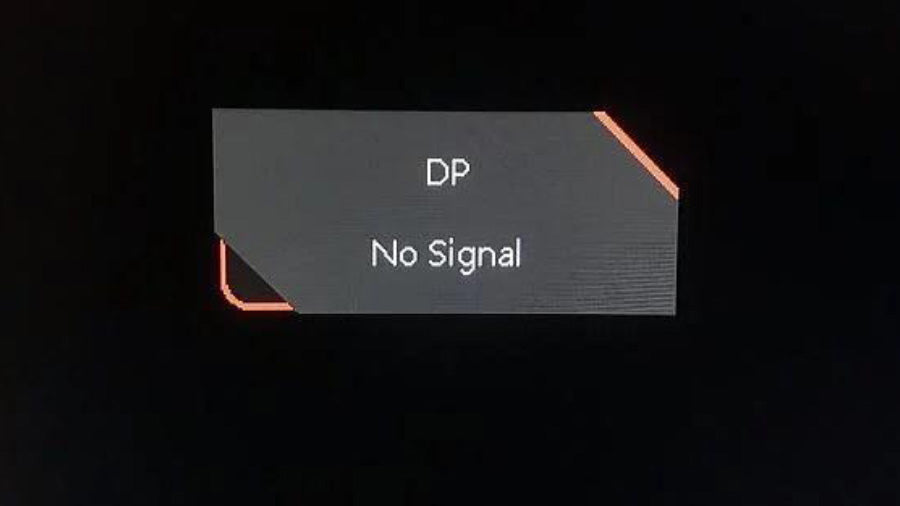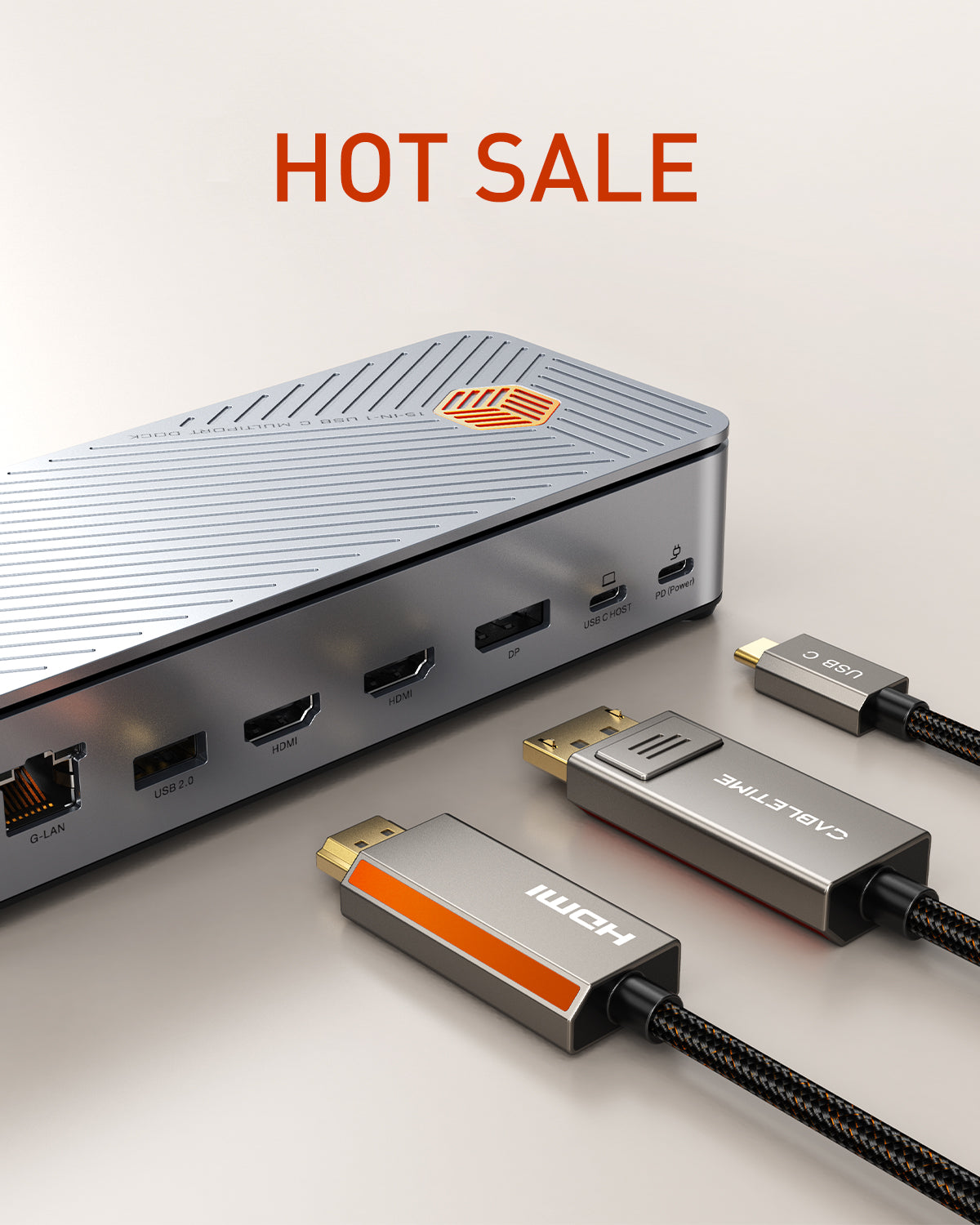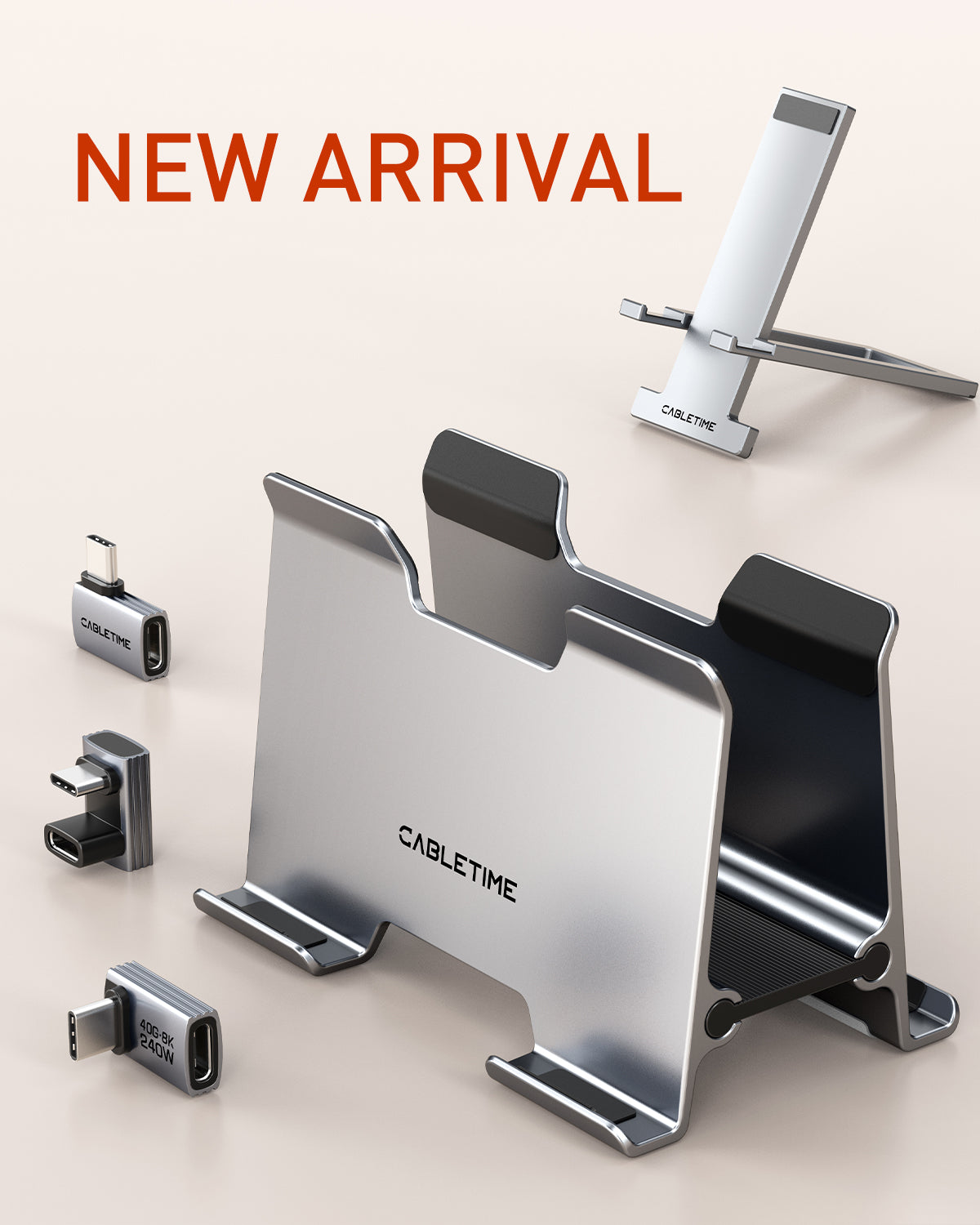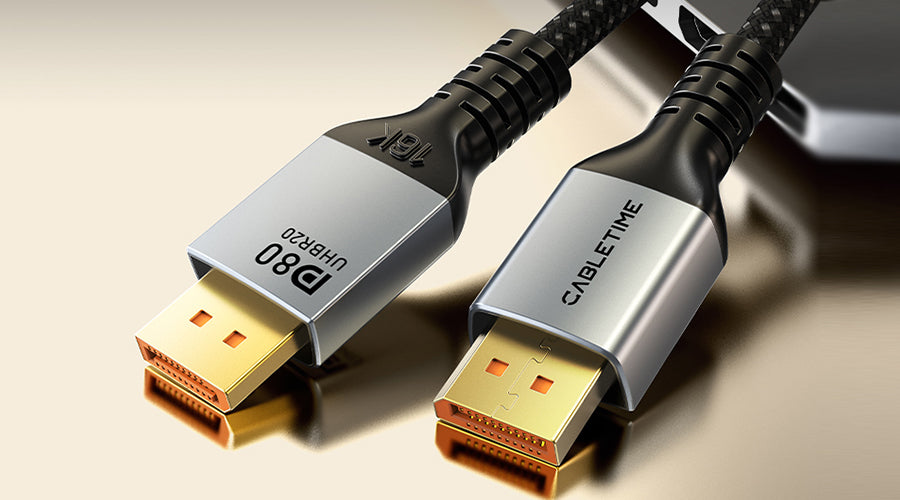The "No DisplayPort Signal" error is a common problem that many users encounter when they try to connect their monitor to their computer via DisplayPort. This error means that the monitor is not receiving any signal from the computer and, therefore, cannot display anything on the screen. This can be frustrating and problematic, particularly if you must use your monitor for work, gaming, or entertainment purposes.
This error has various possible causes, such as hardware failures, connection issues, driver problems, monitor settings, or computer BIOS/UEFI settings. Fortunately, there are also effective steps that you can take to fix this issue and restore your monitor's functionality. In this guide, we will explain the "No DisplayPort Signal" error, its common causes, and the troubleshooting actions that you can track to fix it.

Understanding the “No DisplayPort Signal” Error
Error Overview
The "No DisplayPort Signal" error message appears on your monitor when it fails to receive a signal from your computer via DisplayPort. DisplayPort is a digital display interface developed by the Video Electronics Standards Association (VESA) that can transmit high-resolution video and audio signals between devices. It is commonly used to connect monitors, laptops, desktops, gaming consoles, and other devices.
When you connect your monitor to your computer via DisplayPort, the monitor should automatically detect the signal and display the content from your computer. However, sometimes the monitor may not be able to detect the signal and instead show a black screen with the message "No DisplayPort Signal" or something similar. This means that there is a problem with the communication between the monitor and the computer, and the monitor cannot receive any data from the computer.

Possible Causes
There are several possible reasons that may lead to the “No DisplayPort Signal” error, such as:
- Hardware failures: The monitor, the computer, the DisplayPort cable, or the DisplayPort port may be faulty or damaged, and prevent the signal transmission.
- Connection issues: The DisplayPort cable may be loose, disconnected, or plugged into the wrong port, causing signal loss.
- Driver problems: Your computer's graphics card driver may be outdated, corrupted, or incompatible, affecting the signal output.
- Monitor settings: The monitor may select the wrong input source or have some other settings that interfere with signal detection.
- Computer BIOS/UEFI settings: The computer may have some display-related configurations that prevent the signal output in the BIOS/UEFI settings.
Preliminary Troubleshooting
Before you proceed to the advanced troubleshooting steps, you should first perform some basic checks to rule out some simple causes of the error. Here are some preliminary troubleshooting steps that you can try:
Check Power to Monitor and Computer
The first thing you should do is to make sure that both your monitor and your computer are properly powered on and functioning. Sometimes, the error may be caused by a simple power outage or a faulty power cord. To check the power to your monitor and computer, you can:
- Verify that your monitor's power cord is securely plugged into a functional power outlet and that the power switch of your monitor is turned on.
- Verify that your computer's power cord is securely sealed into a functioning power outlet and that your computer's power button is pressed.
- Try to use a different power outlet or a different power cord for your monitor and your computer, and see if the error persists.
- If you have a laptop, ensure the battery is sufficiently charged, or the laptop is plugged into a power source.

Check and Ensure Connections
The next thing you should do is check if the DisplayPort cable is securely connected to the correct port on both your monitor and your computer. Sometimes, the error may be caused by a loose, disconnected, or misplugged cable. To check and ensure the connections, you can:
- Unplug and replug the DisplayPort cable on both ends and make sure that the cable is firmly inserted into the port.
- Ensure that the DisplayPort cable is plugged into your monitor and computer's DisplayPort port and not into any other port, such as HDMI, DVI, or VGA.
- If available, try using a different DisplayPort port on your monitor or your computer and see if the error persists.
- If possible, try using a different DisplayPort cable to see if the error persists.
Advanced Troubleshooting Steps
Suppose the preliminary troubleshooting steps do not resolve the error. In that case, you may need to try some more advanced troubleshooting steps that involve changing some settings or components on your monitor or your computer. Here are some advanced troubleshooting steps that you can try:
Replace DisplayPort Cable
One of the possible causes of the error is a faulty or damaged DisplayPort cable that cannot transmit the signal properly. To rule out this opportunity, you can try to replace the DisplayPort cable with a new one or replace it with a known working one. To replace the DisplayPort cable, you can:
- Unplug the DisplayPort cable from your monitor and your computer, and set it aside.
- Plug in a new or a known working DisplayPort cableinto the DisplayPort port on your monitor and your computer, and make sure that the line is firmly inserted into the port.
- Turn on your monitor and your computer, and see if the error persists.

Update or Reinstall Graphics Card Drivers
Another possible cause of the error is a problem with the graphics card driver on your computer. The graphics card driver is software that lets your computer transmit with your graphics card and output the video signal to your monitor. If the graphics card driver is obsolete, rusted, or incompatible, it may affect the signal output and cause an error. To fix this problem, you can try to update or reinstall the graphics card driver on your computer. To update or reinstall the graphics card driver, you can:

- Push the Windows key + R on your keyboard to unlock the Run dialogue box.
- Type devmgmt.msc and press OK to open the Device Manager.
- Extend the Display Adapters category, and right-click on your graphics card device.
- Select Update driver from the context menu and follow the on-screen instructions to update the graphics card driver. Alternatively, you can select Uninstall device from the context menu and follow the on-screen instructions to uninstall the graphics card driver. Then, continue your computer and let Windows automatically reinstall the graphics card driver.
- Turn on your monitor and your computer, and see if the error persists.
Check Monitor Settings
Sometimes, the error may be caused by some settings on your monitor that interfere with the signal detection. For example, your monitor may select the wrong input source or have some other settings that affect the signal quality. To fix this problem, you can try to review and modify the monitor settings. To review and adjust the monitor settings, you can:
- Turn on your monitor and push the Menu button on your monitor or the remote control.
- Navigate to the Input Source or Input Select option, and make sure that the DisplayPort option is selected. If not, select the DisplayPort option and confirm your choice.
- Navigate to the other settings that may affect the signal quality, such as Brightness, Contrast, Resolution, Refresh Rate, etc., and make sure that they are set to the optimal values. You can refer to your monitor’s manual or online support for more information on how to adjust these settings.
- Exit the menu and see if the error persists.

Computer BIOS/UEFI Settings
The BIOS/UEFI settings are the basic input/output system or unified extensible firmware interface settings that control your computer's hardware and software configurations. Sometimes, the error may be caused by some display-related configurations in the BIOS/UEFI settings that prevent the signal output. To resolve this problem, you can try to check and modify the BIOS/UEFI settings. To check and modify the BIOS/UEFI settings, you can:
- Turn off your computer and monitor, and unplug the power cord from your computer.
- Plug the power cord back into your computer, and turn on your computer.
- Press the F2, F10, F12, Del, or Esc key repeatedly on your keyboard to enter the BIOS/UEFI settings. The precise key may vary relying on your computer's model and manufacturer. You can direct to your computer's manual or online support for more information on how to enter the BIOS/UEFI settings.
- Navigate to the display-related configurations, such as Primary Display, Integrated Graphics, Discrete Graphics, etc., and make sure that they are set to the appropriate values. You can guide your computer's manual or online support for more information on how to modify these configurations.
- Save and exit the BIOS/UEFI settings, and restart your computer.
- Turn on your monitor and see if the error persists.

Contact Manufacturers or Professionals
If none of the above steps resolve the error, you may need to contact the manufacturer or professionals for further assistance. There may be underlying issues with your monitor, computer, or DisplayPort cable that require more advanced diagnosis and repair. To contact the manufacturer or professionals, you can:
Manufacturer Assistance
You can attempt to reach the customer support of your monitor, computer, or DisplayPort cable hardware manufacturers and explain the problem and the steps you have tried. They may be able to provide you with more specific guidance, troubleshooting tips, warranty information, or replacement options. The contact information of the hardware manufacturers can be found on their websites, manuals, or packaging.
Professional Technical Support
You can also try to pursue help from professional technical support, such as a local computer repair shop, an online tech support service, or a certified technician. They may be able to inspect and diagnose.
Where to Get Premium Quality Display Port?
For those in search of a premium quality DisplayPort, look no further than CableTimeTech. Renowned for their exceptional craftsmanship, CableTimeTech offers a range of DisplayPort cables that ensure flawless video and audio transmission. Their products boast superior durability and performance, catering to both casual users and tech enthusiasts. Dive into the world of CableTime and experience connectivity with unparalleled reliability. Here the top products of Displayport offered by Cabletimetech:
- DisplayPort 2.1 Cable 16K@60Hz 8K@120Hz 4K@240Hz 80Gbps
- DisplayPort To DisplayPort 1.2 Cable 4K 60Hz 1m 3m 5m
- 8K 60Hz DisplayPort 1.4 Cable 4K 144Hz 10ft For Computer PS4
- DisplayPort To DisplayPort Cable DP1.4 With 8K 60Hz
- 6ft DisplayPort To HDMI Male To Male Cable 4K 60Hz
- Mini DP To HDMI Cable 4K 30Hz With LED Indicator Light
- DP To DP 1.2 Cable 4K 60Hz For Gaming Monitor, TV, PC, Laptop
Preventive Measures and Best Practices
To prevent the "No DisplayPort Signal" error from happening again in the future or to reduce the chances of encountering this problem, you can follow some preventive measures and best practices. Here are some tips that you can apply:
Cable Management and Maintenance
One of the most important preventive measures is to properly manage and maintain your DisplayPort cable. A poorly managed or maintained cable can easily cause damage, wear, or tear and affect the signal transmission. To manage and maintain your DisplayPort cable, you can:
- Avoid bending, twisting, or stretching the cable excessively, as this can harm the internal wires or connectors.
- Avoid placing heavy objects on the cable or running the cable under carpets, rugs, or furniture, as this can cause pressure or friction on the cable.
- Avoid exposing the cable to extreme temperatures, humidity, or sunlight, as this can degrade the cable’s quality or performance.
- Regularly clean the cable and the connectors with a gentle cloth or a cotton swab, and clear any dust, dirt, or residue that may interfere with the signal transmission.
- Use higher-quality cables that have better shielding, durability, and compatibility. For example, you can use DisplayPort 2.0cables, which support higher resolutions, refresh rates, and bandwidths than previous versions. You can find some of the best DisplayPort 2.0 cables on the market here.

Regular Check for Updates
Another important preventive measure is to regularly check for updates for your hardware driver and operating system. Updates can provide bug fixes, security patches, performance modifications, or new features that can improve the signal output and detection. To check for updates, you can:
Windows users can use the Windows Update feature to check for and install updates for their operating system and graphics card driver. To utilize the Windows Update feature, you can:
- Push the Windows key + I on your keyboard to execute the Settings app.
- Tap on Update & Security, and then tap on Windows Update.
- Click on Check for updates, and stay for Windows to scan for any available updates.
- If there are any updates, tap on Download and Install and heed the on-screen teachings to finish the update process.
- Restart your computer and monitor it to see if the error persists.
Mac users can utilize the Software Update feature to scan for and install updates for their operating system and graphics card driver. To use the Software Update feature, you can:
- Click on the Apple menu on the top left intersection of your screen, and pick System Preferences.
- Tap on Software Update, and stay for the Mac to scan for any available updates.
- If there are any updates, tap on Update Now and heed the on-screen instructions to complete the update process.
- Restart your computer and monitor it to see if the error persists.
Conclusion
The "No DisplayPort Signal" error is a common problem that many users face when they try to connect their monitor to their computer via DisplayPort. This error means that the monitor is not receiving any signal from the computer and, therefore, cannot display anything on the screen. This can be caused by various factors, such as hardware failures, connection issues, driver problems, monitor settings, or computer BIOS/UEFI settings.
Wave goodbye to ‘No Signal’ blues! If you’re stuck with a DisplayPort dilemma, our step-by-step guide has the fix. Ready for flawless connectivity? Visit Cabletime now and find the ultimate solution to keep your display sharp and your gaming or work sessions uninterrupted. Connect with confidence today!
People Also Ask
Here are some of the frequently asked questions that people have about the “No DisplayPort Signal” error and its related topics:
Why does DisplayPort have no signal HDMI work?
If you have a DisplayPort no signal error, but your HDMI works fine, it may mean that there is a problem with your DisplayPort cable, port, or driver, and not with your monitor or your computer. To fix this problem, you can try the troubleshooting steps that we have mentioned in this guide, such as replacing the DisplayPort cable, updating or reinstalling the graphics card driver, or checking the computer BIOS/UEFI settings.
How do I turn my HDMI into DisplayPort?
If you want to turn your HDMI into DisplayPort, you will need to use an adapter or a converter that can convert the HDMI signal into a DisplayPort signal. You can find such adapters or converters online or in electronic stores. However, you should be aware that some adapters or converters may not support the full features or quality of DisplayPort, such as the resolution, refresh rate, or audio. Therefore, you should check the adapter or converter's specifications and compatibility before buying it.
Why does my dual monitor say no signal?
If you have a dual monitor setup, and one or both of your monitors say there is no signal, it may mean that there is a problem with your DisplayPort cable, port, driver, or settings and not with your monitors or your computer. To fix this problem, you can try the troubleshooting steps that we have mentioned in this guide, such as checking and ensuring the connections, replacing the DisplayPort cable, updating or reinstalling the graphics card driver, or checking and adjusting the monitor settings.











8 comments
Саня
У меня была просто банальная проблема, при всех танцах с бубнами уже хотел бежать за новым кабелем в магазин и тут решил внимательно осмотреть контакты на самом кабеле и вуаля оказалось что один контак не прижимался в свободном состоянии, после выправления все заработало должным образом
yawa
ang bobo mo bwesit nasayang lang ang oras sa pagbabasa puro mali ang advice
Ahuman
Nice try chatgpt, nice try.
heian
Ensure that the DisplayPort cable is plugged into your monitor and computer’s DisplayPort port and not into any other port, such as HDMI, DVI, or VGA.
This is the most funny sentence I have seen this month. DisplayPort cable does completely not fit in an other port, without a ‘crack’ sound.
And the most important knowledge about DisplayPort, DisplayPort Plus is just not here…..(and about you might need an adapter between DisplayPort and HDMI)
Nana
Is this a joke? Why are there even any suggestions of solutions that REQUIRE a functioning monitor to execute? In example, go to certain settings to “update gpu drivers.” My monitor is not working sir, HOW can I accomplish this? I can’t SEE anything! >.<
Leave a comment
This site is protected by hCaptcha and the hCaptcha Privacy Policy and Terms of Service apply.